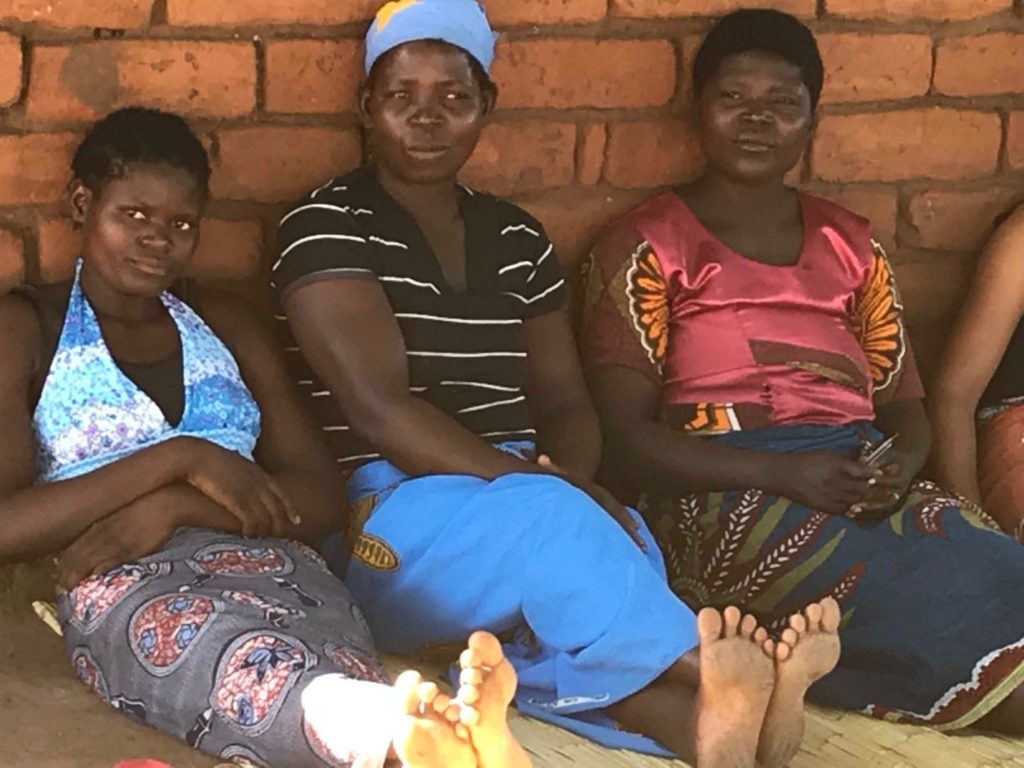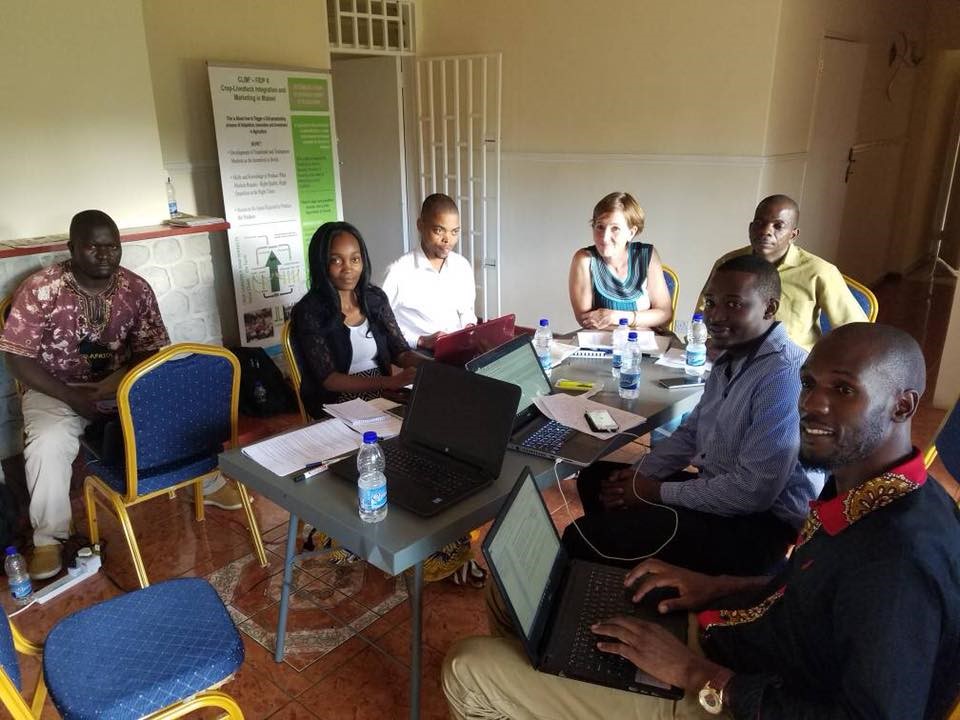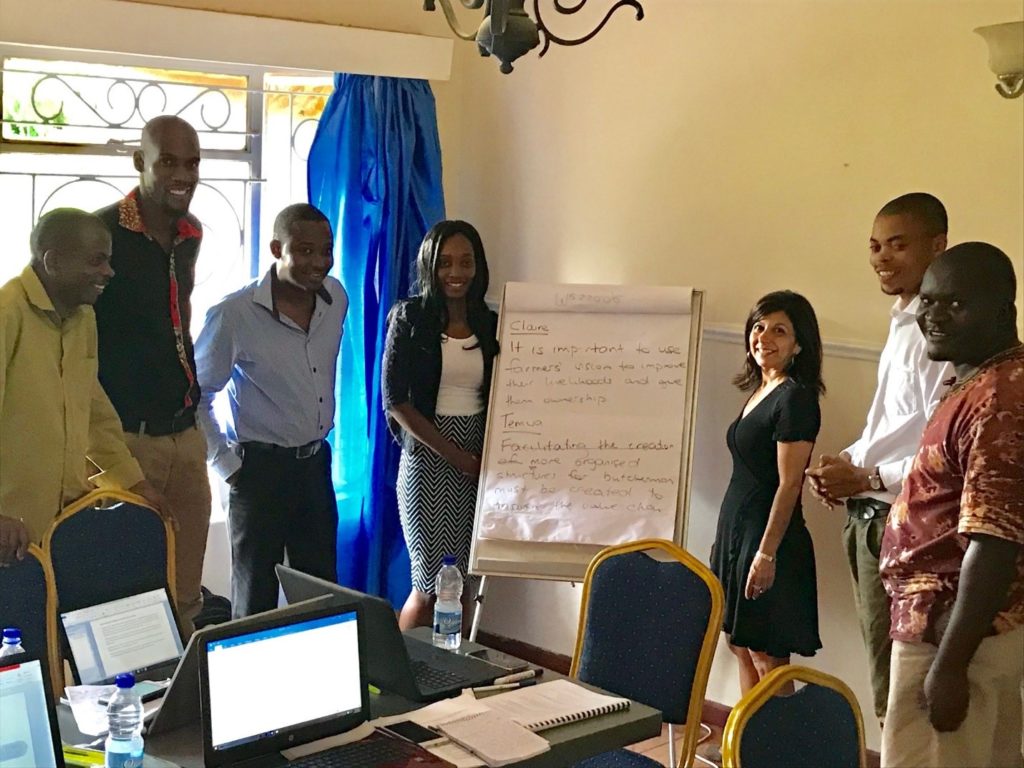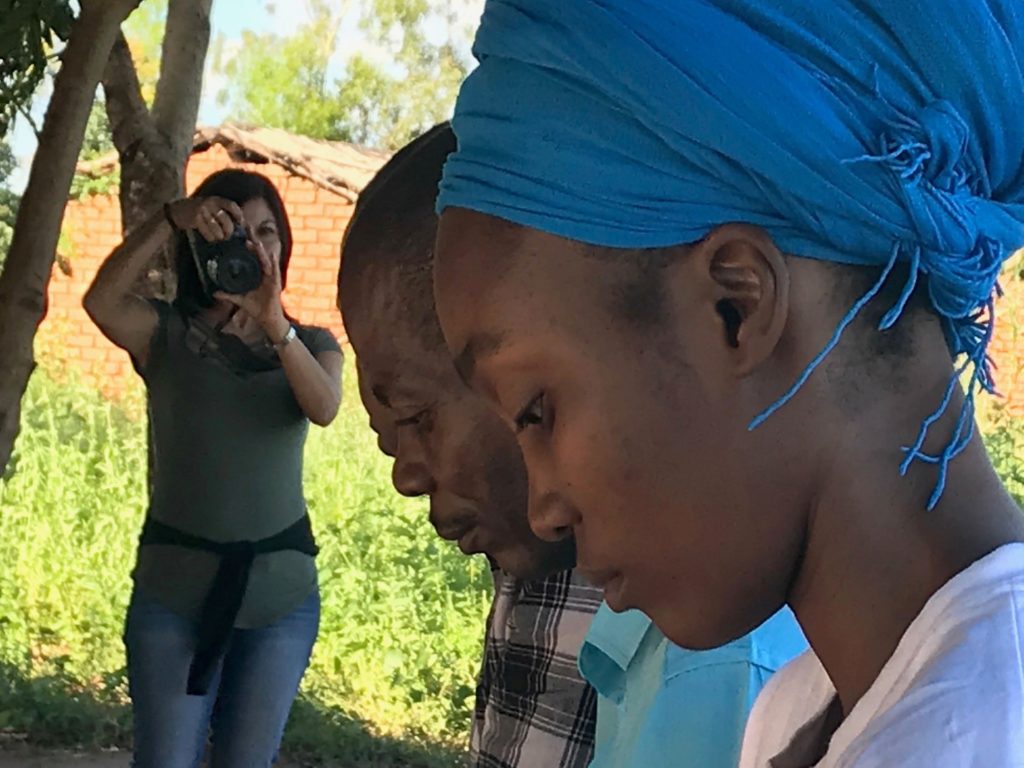
Farmer feedback on CLIM2 interventions, used for powerful captions in blogs – part of the training
The challenge faced by research-for-development projects promoting rural innovation is often the inability to communicate critical information to the right audience in a timely manner.
At the beginning of the recent ICRISAT-led communication training workshop in Blantyre, Malawi, which centered on blog writing as a means of effectively disseminating development work, Mr Temwa Mvula, SSLLP rural development facilitator in the Balaka district, Crop Livestock Integration and Marketing in Malawi project (CLIM2), asks: “How can we make the progress of our research and development work more transparent to the government of Malawi and to donors?”
Delay in communicating immediate progress is often rooted in the fear of compromising scientific robustness. In addition, rural innovation entails complex processes, often not visible to those who are not directly involved. This creates unease for governments whose mandate is to ensure welfare for rural communities, as well as for donors who want quick numbers on how many lives were changed by the process. It takes many steps to make a mile: blogs allow researchers and their teams to share regular insights from the field while working on a broader and deeper research and development agenda.

Snapshots from Blog Writing training session for project team
The CLIM2 project breaks away from the tradition of supporting rural families through the provision of infrastructure and inputs, creating dependency and limiting participants from grasping opportunities. Instead, CLIM2 is aimed at more systemic and sustainable interventions, triggering self-perpetuating processes of innovation, adaptation and investment in agriculture, driven by markets and supported by a large network of stakeholders and support services. The new approach starts with developing local capacity, trust and commitment among local communities, alongside the private sector and local extension, which may come at the cost of immediate visibility.
Through farmers learning with local government officials, and vice versa, we build the foundation for rural innovation using Innovation Platform Approaches to facilitate sustainable change, training farmers in Comparative Gross Margin Analyses to prioritize the most profitable mixes of enterprises, and Feed Assessment Tool (FEAST) feed interventions to support livestock value chains.

Taking notes of farmer statements – part of the training
Only when informed can people take a new direction and use market opportunities that are already in place to their advantage, ultimately working towards transforming their livelihoods.
“The CLIM2 project has brought many new interventions to us,” said a member of the Chimtengo Youth Club during a project visit by the CLIM2 blog writers. “For the first time we are engaging the youth in agricultural enterprises; we have started to look at market opportunities and through that we have identified local chicken rearing for markets as a new activity. Working together as a group is also new to us, since we were used to receiving support individually. With all this, we now learn how we can generate more income.”

Snapshots from Blog Writing training session for project team
There are positive stories such as this one throughout the three districts in which the project is operating; we need new communication methods to extract and highlight them in order to transmit them to a larger audience, including the Malawian government, donors and other stakeholders and decision makers. In addition, we need them to help inspire confidence in these new approaches, to help us raise attention and prepare conditions where they can be brought to scale.
As part of a larger communication strategy, blogs are essential: Why?
- The shift towards development of functional and transparent markets is already happening in Malawi. Blogs help to communicate this new direction.
- Blogs tell stories from the inside, pick important highlights, and bring out comprehensive sets of messages. In its first series of blogs, the CLIM2 team has already proposed to share highlights on the role of innovation platforms (Blog 1) the tools that can inform the innovation platform process (Blogs 2 and 3) and possible value chain outcomes (Blogs 4, 5 and 6). Follow-up blogs series will inform about new insights and developments throughout the course of the project. The blog writers started by defining the messages their blogs would convey:
- Innovation platforms are stimulating broad interactions in high-potential value chains and contributing to policy dialog.
- Supporting farmers’ vision is important to improve their livelihoods and give them ownership.
- Training women and youth farmers in gross margin analyses is a critical tool for prioritizing their choice of investments.
- Keeping local chickens offers sustainable nutrition for the most vulnerable families.
- More organized structures for butchers must be created to improve the goat value chain.
- FEAST, as a new tool, improves development of livestock feeding interventions in Malawi.
- Blogs generate stories for their particular requirements. Recounting the actors’ sentiments, they create substance for discussion and feedback. They connect people and processes and start conversations with a broad audience. They are not confined to geographic boundaries and can be shared with actors of similar interests elsewhere.
- Blogs empower young people in their development work. Training project staff working on the ground on blog writing sharpens their observation skills as well as their ability to collate and document material from their work, instilling confidence and motivating them to share insights about improving the lives of rural communities with the larger world.

Taking good photographs – part of the training
Ken Gunsalu, SSLLP rural development facilitator in the CLIM2 project, summed it up when he said: “It is now easier for me to translate my observations from engagements with rural communities, to professional audiences in a language that is understandable and includes the social aspects of the project. If we can better tell farmers’ stories to professionals, it will make creating solutions easier.”
About the author:
 Sabine Homann-Kee Tui, Sabine Homann-Kee Tui,ICRISAT |
 Sute Mwakasungula, Sute Mwakasungula,SLLP |
Acknowledgements
Blog-writing training and editing by Violette Kee Tui.
CRP: 


Add Comment